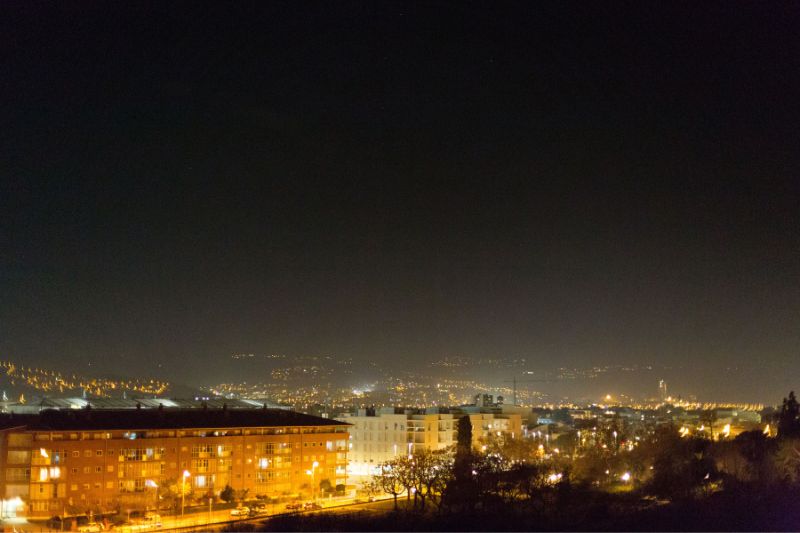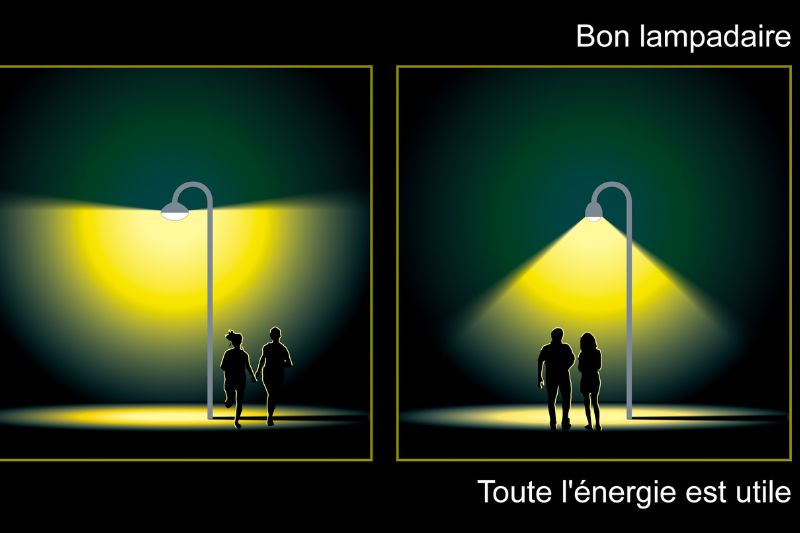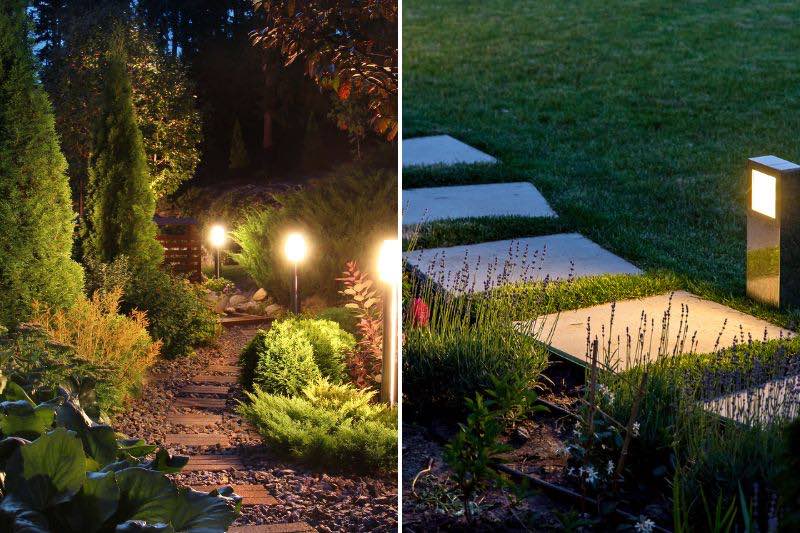Light pollution is a growing problem that extends beyond the twinkling lights of metropolises. It also seeps into our gardens, disrupting the sleep of animals, disturbing nocturnal ecosystems, and stealing the starry expanse from our eyes. However, we have the power to make a difference, even on a small scale. Why and how does light pollution impact our environment? More importantly, what are the concrete solutions to reclaim starry nights while ensuring our safety and comfort? We explore this in the article.

How can light become pollution?
Light becomes pollution when it is excessive and poorly directed. This is referred to as light pollution. It can have several negative impacts:
- Disruption of ecosystems: Many animals, such as migratory birds, nocturnal insects, and bats, rely on the night and natural day cycles for their survival. Artificial light disrupts their behaviour, sleep cycles, reproduction, and navigation.
- Impact on human health: In humans, excessive exposure to artificial light, particularly blue light, can disrupt sleep and circadian rhythms, and has been linked to health issues such as depression, obesity, diabetes, and certain types of cancer.
- Loss of visibility of the starry sky: Light pollution eclipses the natural beauty of the night sky, making it difficult to observe stars and planets, which have inspired curiosity and knowledge for humanity for millennia.
- Energy waste: A significant portion of the light produced by outdoor lighting is wasted, as it is poorly directed, emitted into the sky or in unnecessary directions, leading to unnecessary energy consumption and increased greenhouse gas emissions.
- Intrusion and loss of tranquillity: Intrusive light can also cause disturbances for those who prefer to sleep in darkness or who appreciate the peace of a dark night.
Did you know? Marine turtles hatch on the beach and naturally use the moonlight reflected by the ocean to find their way to the sea after hatching. However, in areas heavily lit by artificial lights, young turtles often become disoriented. Instead of heading towards the sea, they may move towards the illuminated areas, leading them to wander onto roads or into built-up areas where they risk being crushed by vehicles or succumbing to exhaustion.

Can artificial night light impact plants?
Light pollution significantly impacts not only fauna but also flora. A notable example concerns trees, particularly in urban areas.
Trees have biological rhythms influenced by natural day and night cycles. They use these cycles to regulate important processes such as photosynthesis, respiration, and growth. Artificial light during the night can disrupt these natural rhythms.
A specific example concerns bud burst, the process by which tree buds burst and transform into leaves in spring. The presence of artificial light at night can lead to early bud burst. This may seem beneficial at first glance, but if it occurs too early, the new leaves can be damaged by late-season frosts. Additionally, this can shift the tree's schedule for the rest of the year, affecting its health and growth.
Flowering plants can also be affected by light pollution. Many of these plants rely on the length of the night to determine when to bloom. If nights are illuminated by artificial lights, this can trigger premature flowering, impacting pollinators and disrupting the entire ecosystem.
What can we do in our own gardens?
There are several effective ways to reduce light pollution in your garden. Here are some tips and tricks to consider:
- Use down-facing fixtures: To illuminate a path or walkway, choose fixtures that direct light downwards to avoid emitting light into the sky.
- Choose the right bulbs: Opt for energy-efficient bulbs with warm light. LED bulbs are a good option as they are energy-saving and durable. However, avoid blue spectrum bulbs, as they are more harmful to nocturnal animals and can disrupt your circadian rhythm.
- Turn off unnecessary lights: Switch off lights when they are not needed. Using timers or motion detectors can help reduce energy consumption and light pollution.
- Install shutters, curtains, or blinds: These can help block light coming from inside your home and reduce light pollution.
- Plant trees or hedges: They can serve as natural barriers to block light from sources outside your garden.
- Appropriate brightness: Use only the amount of light necessary for the task at hand. Excessively bright light can create harsh shadows and be blinding.
- Light reflection: Use light-coloured surfaces to reflect light where it is needed, which can reduce the need for additional light sources.
- Awareness: Raise awareness among your neighbours about light pollution and encourage them to adopt environmentally friendly lighting practices.
By adopting these practices, you will not only contribute to reducing light pollution but also create a more pleasant and healthy nocturnal environment for yourself and local wildlife.

Reminder of current regulations
Light pollution is a serious issue in many countries, including France and Belgium.
In France, light pollution is regulated by the Environmental Code. The law imposes several restrictions:
- Lighting of non-residential buildings must be turned off one hour after occupancy ends and cannot be turned back on more than one hour before occupancy begins. This applies to shop windows, offices, and interior lighting of buildings visible from the outside.
- Outdoor lighting must be turned off by 1 a.m. at the latest, particularly for sports facilities, parking lots, etc.
- Lighting of building facades cannot be turned on before sunset and must be turned off by 1 a.m. at the latest.
However, some exceptions exist, such as during Christmas periods or for tourist areas.
In Belgium, there is no specific national law regarding light pollution. Regulation of lighting is primarily left to the discretion of local authorities. However, some cities and municipalities have implemented their own measures to reduce light pollution.
Additionally, Belgium has signed the Charter for the Protection of the Night Sky and the Right to Light of Stars, which aims to protect areas of unpolluted night sky and minimise the impact of light pollution.
































Comments